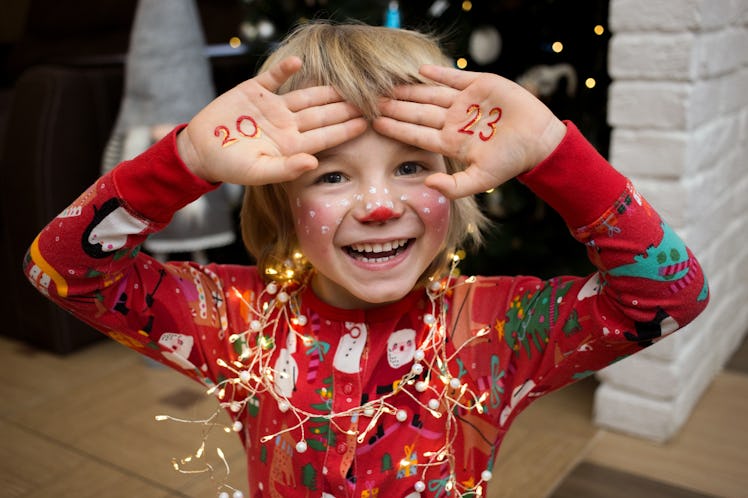Santa Claus Is Actually Just a Big Elf, Says ‘Night Before Christmas’
This makes perfect sense.

So, all this time, we’ve been thinking that Santa’s a big guy — big beard, big belly, big laugh, ho, ho, ho, etc. We tell our kids that he slides down chimneys, without any explanation for how this is possible. Granted, there are a lot of things about the Santa story that makes no sense, and we happily lie about all of them. But if you read The Night Before Christmas, the 1822 poem that established Santa’s modern form, you’ll see that he’s not a big guy at all.
He’s an elf.
He’s not even a little bit big. And this is not even alluded to; it’s stated very clearly.
When what to my wondering eyes did appear,
But a miniature sleigh and eight tiny reindeer, With a little old driver so lively and quick…
A miniature sleigh, tiny reindeer, a little driver. Little.
Clement Clarke Moore, who wrote the poem for children, goes on about all the little things. The protagonist hears on the roof, “the prancing and pawing of each little hoof,” and then describes Santa: “His droll little mouth was drawn up like a bow,” and “He had a broad face and a little round belly.”
And, the coup de grâce: “He was chubby and plump, a right jolly old elf.”
Why did we not know this? Why do we not think of Santa this way? In an edition of The Night Before Christmas that I had as a kid, Santa is even depicted on his tiptoes reaching up to drop toys into the stockings on the mantel. How did we skip over this key piece of his identity? Especially when it adds to his magic? And especially when this poem was what popularized the logistics that we know so well: the eight reindeer, the sleigh, the bag of toys, the chimney travel, the jolliness, and the basic fact that Santa works on Christmas Eve and not on Saint Nicholas’s feast day, December 6?
Santa was not even really Santa before this poem. He went through a bunch of identities that ranged from what is believed to be his actual identity — a 3rd-century bishop in Turkey who served time for defending Christianity — to a saint who was thought to fly, to a sort of gangster disciplinarian named Rough Nicholas who told kids they’d be kidnapped if they didn’t behave themselves.
I sort of knew that Santa had a long history and a bunch of names — Saint Nicholas, Father Christmas, Sinterklaas, Père Noel, etc., etc. — but I pretty much assumed he’d been around forever in some form as a saintly guy who loved kids. In fact, it’s thought that Saint Nicholas got the reputation for being a kid person because he helped a family not sell their daughters into prostitution and then did some other thing involving resurrecting a bunch of kids who had been murdered and then… pickled in an innkeeper’s basement? Idfk.
Moore’s poem and then, in the late 1800s, an illustration of Santa Claus by Thomas Nast (a political cartoonist who also created the Democratic donkey) were the main cultural forces establishing the Santa we know now, and in both, he’s a little bit… little.
Somehow — maybe because we are American and we love everything big, or because we wanted to have dressed-up Santas so our kids could sit, terrified, on their laps and ask them for shit they don’t need — we went against Moore’s inspired vision and made Santa into a big guy. And now, when we read The Night Before Christmas to our kids, we don’t even realize that we’ve left the sweet, little jolly old elf, his miniature sleigh, and tiny reindeer behind, one more forgotten stage in a magical saint’s becoming.
This article was originally published on